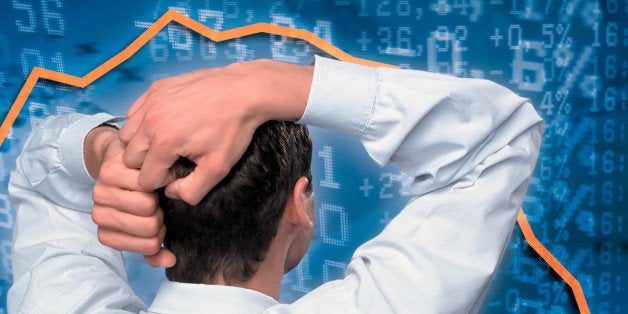
Four years ago, on May 6, 2010, the Dow Jones Industrial Average dove 1,000 points and almost 10 percent of its market value. Twenty-six years and eight months ago the Dow Jones Industrial Average collapsed by over 500 points and wiped nearly 25 percent off equities.
When pondering the four-year anniversary of the Flash Crash, I couldn't help but compare it to Black Monday. So what has changed since October 1987? It seems to be that the speed at which a crash, or any market event, can happen has increased exponentially.
There were similarities between the two crashes. Prior to Black Monday, the DJIA had gained an astonishing 44 percent in just seven months. But global stock markets had begun to wobble just before Black Monday, with tensions high between the U.S. and Iran.
The U.S.'s Oct. 19 crash -- a 508-point drop on the DJIA, to 1738.74 -- was the final straw. The crash resonated across global markets, with drops ranging from 22.5 percent in Canada to as much as 60 percent in New Zealand.
The fallout was intense; regulators and investors scrambled to blame so-called "program trading" -- something relatively new to the marketplace. New rules were introduced to prevent it from happening again, including circuit breakers and curbs on positions.
But the market rebounded quickly, ending the year higher than it had begun and returning to pre-Black Monday highs only two years later.
The Flash Crash of 2010 wiped $1 trillion of market value off the books. It also happened during a particularly volatile period, as world economies struggled to survive the Great Recession. The DJIA had rallied nearly 7.5 percent since the beginning of the year -- not as spectacular as the 44 percent in 1987, but impressive given the dire economic climate.
And the market recovered quickly. But instead of days and months, it took only minutes. If you had been away from your screen for a half hour, you would not have known it had happened.
The post-Flash Crash narrative became one of "evil" trading platforms, and there were cries to bring back circuit breakers (which many trading destinations did).
The meant that program, or automated, trading was blamed for both extreme market events. Automated trading had been accelerated by the new U.S. market structure -- the Securities and Exchange Commission's Regulation New Market Structure (Reg NMS), which was passed in June 2005.
New exchanges popped up like weeds, creating new trading opportunities for the traders with the fastest technology. High-frequency trading (HFT) soared, and profits were made. But before you could say "HFT," the Flash Crash called attention to the fact that some trading firms were at a significant speed advantage over others.
More recently, a book by Michael Lewis, Flash Boys, took some well-publicized pot shots at HFT, saying the stock market is "rigged" by Wall Street insiders using co-located servers at exchanges and sophisticated algorithms to trade.
So what lessons have we learned from both Black Monday and the Flash Crash?
There is nothing inherently wrong with speed in trading. Speed is the new trading benchmark -- faster is better. But the faster the trading systems get, the harder it is to spot fraud or errors before they move the market. What regulators are discovering is that they also need to have speedy systems in order to catch the wrongdoers.
The Flash Crash and other HFT concerns have led to several disparate investigations -- by the CFTC and SEC to the FBI and the NY Attorney General. These are investigating previous aberrant practices and crashes, which is fine. But what they need to be doing is safeguarding the market from any more untoward events -- like Black Monday or the Flash Crash -- happening in the first place.
This is where smart monitoring systems can help. Regulators and other agencies need systems that are not only as fast as HFT trading platforms but are also smarter, sniffing out and alerting the authorities as and when something anomalous is happening rather than after the fact.
Monitoring technology can spot major price and volume spikes in particular instruments, how often they happen and maybe even why, and whether a pattern in market behavior caused them. And these systems can flag up liquidity concerns by monitoring how liquidity moves across venues. They can tell if potential trader collusion, such as wash trading, is going on. They can spot potential insider trading by correlating unusual trading incidents with news releases and market movements.
Plus, their algos are being programmed to "learn" from market patterns and to adapt as these patterns change. Faster is meeting smarter, allowing the gamekeepers to block the poachers before they begin the trek to the chicken coop.